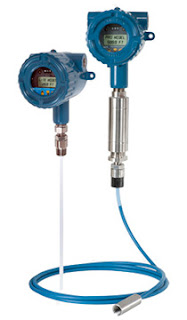 Insertion, in-line, multipoint & portable thermal flow meters
Insertion, in-line, multipoint & portable thermal flow meters are used for monitoring and measuring industrial gas flows for stacks, ducts, flares, emissions, biogas, chemical processes, condensing gases, and pressurized gases. They provide the dependability required for most challenging industry requirements and are perfect for applications that call for reliability, exacting accuracy, cost-effectiveness. Below are the primary industries and their associated applications where thermal flow meters are found.
Coal Power
The increasingly stringent environmental and pollution requirements in the U.S. have resulted in a declining use of coal. However, coal remains the most common fuel source for generating power (mostly in specific industry applications), and more than 90% of the coal mined in the U.S. is used for generating power.
Coal Power Metering Applications Include:
- Hot and cold pulverizer Air
- Primary Air
- Fuel air flow
- Secondary or underfire Air
- Tertiary or overfire Air
- Baghouse airflow
- Exhaust/emissions flow
Incinerators
Incineration (also called gasification, pyrolysis, plasma arc, and waste‐to‐energy) is the thermal treatment of disposed waste materials, converting it to ash, flue gas, and heat. Incineration reduces the original waste mass by up to 85% and the volume up to 95%. Flue gases are cleaned or burned before the final emissions are released into the atmosphere.
Specific Incinerator Installations:
- Monitoring primary and secondary air to the furnace
- Measuring combustion air to a boiler
- Monitoring stack flue gas
- Measuring and monitoring emissions
Landfills
Landfill gas falls into five basic monitoring categories: soil gas, near surface gas, emissions, ambient air, and facility air. Soil gas, emissions, and facility air are environments suited for thermal mass flow devices. Thermal technology is excellent for measuring extremely low flows and is known for having very low pressure drop.
Standard thermal flow meters do not work well in condensing gas environments, such as those found in landfill methane recovery systems. The unpredictable moisture levels caused by leachate, rain, temperature, and humidity add to the accuracy issues related to wet gas flow measurements.
Specific Landfill Installations:
- Measuring emissions
- Air monitoring spot checks across cells
- Measuring gas conversion utilized in electricity generation
- Supporting fuel cell management
- Post‐combustion emissions
Metal Industries
This category includes primary and secondary industrial metal sources such as smelters, foundries, metal refineries, steel mills, and metal recyclers.
Specific Installations in Metal Industries:
- Measuring furnace air
- Measuring combustion air to blast furnace
- Natural gas, combination air to blast furnace and reheat furnace
- Monitoring exhaust, stack, and emission gases
- Baghouse flow
- Argon or chlorine gas flow, SNIF process in Basic Oxygen Furnace (BOF) area
- EPA Method 14 stack flow (aluminum only)
- Nitrogen blanketing
- Continuous caster pneumatic systems
- Coater line exhaust flow
Petroleum & Petrochemicals
The petrochemical industry creates products from petroleum that includes oil and gas. But petroleum is also used to create ethylene, propylene, benzene, toluene, and xylene — all of which provide the building blocks for solvents, dyes, detergents, fertilizers, adhesives, rubbers, plastics, resins, synthetic fibers, lubricants, and gels.
Specific Installations in Petroleum & Petrochemicals:
- Measuring combustion air to a boiler
- Measuring gas to flares
- Monitoring stack flue gas
- Measuring emissions (CEM)
- Measuring combustion fuel‐to‐air ratios
- Monitoring low‐pressure hydrocarbon storage vessel vent lines
- Monitoring high‐pressure distillation column off‐gases
- Monitoring very‐low flow for stuck open relief valves alarms
- Monitoring knockout drum relief valve switch to the flare
Pulp & Paper
Creating paper pulp relies on a careful balance of low velocity air flows among the various processes. For example, the recovery boiler following the digester must be modulated to follow changes in the digester load. Other imbalances can create excessive amounts of pollutant gases, reduce chemical recovery efficiency, reduce the boiler’s steam production, create extra soot to coat boiler tubes, or cause excess corrosion problems for boiler components.
Specific Installations in Pulp & Paper:
- Measuring combustion air to a boiler
- Measuring primary/secondary/tertiary air to a recovery boiler
- Monitoring stack flue gas
- Measuring stack emissions
- Monitoring digester gases and aeration air
- Measuring inlet combustion air to gas turbine generator sets
- Controlling tight fuel‐to‐air tolerances, such as with natural gas
- Measuring turbine exhaust gases
- Measuring overfire and underfire air
Wastewater
The primary applications in the wastewater environment are measuring blower air to each pool in the aeration basin and measuring digester gas flow. Operating the aeration blower accounts for up to 60 percent of all power consumed at a wastewater site, and proper air management can lead to massive savings in energy usage and equipment efficiency. Monitoring the health of the digester can provide indicators that minimize disruptions and leaks.
Flow Metering Applications in Wastewater Include:
- Header (blower) air flow
- Individual pool air flow in the aeration basin
- Digester gas production
- Precombustion engine fuel flow
- Air/fuel to boiler or engine
- Flare gas flow



